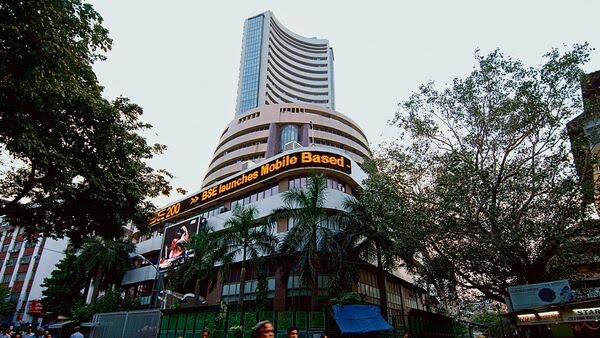By The Sampadak Express
Indian markets saw a strong recovery on Tuesday after experiencing a significant dip on Monday, triggered by fears of a global trade war due to US tariffs imposed on its trading partners. The recovery was driven by bargain hunting and a broader rebound in Asian markets.
On Tuesday, as US markets showed signs of stabilizing following the shock over President Donald Trump’s tariff announcements, Asian indexes also picked up steam. Japan’s Nikkei 225 surged by 6%, signaling optimism across the region.
In India, investors and traders adopted a more positive outlook, with both benchmark indices, the Sensex and Nifty, gaining over 2%. By 3:30 pm, the Sensex closed at 74,227.08, while the Nifty recovered 374.25 points to end at 22,535.85. This followed a sharp decline the previous day, when the Sensex and Nifty fell by 3% and 3.2%, respectively, marking their biggest single-day drop in 10 months, spurred by concerns over a potential global recession due to new US tariffs.
Reasons Behind the Market Rebound
The uptick in Indian markets came after US President Donald Trump mentioned that Japan would send a delegation to negotiate, sparking hopes that the US might soften its stance on tariffs. However, Trump’s simultaneous threat of an additional 50% tariff on Chinese imports, should Beijing maintain retaliatory tariffs, tempered optimism.
Market experts highlighted that the rebound was expected, as the markets were already oversold. “The recovery was anticipated, as the markets had become oversold, making them ripe for a rebound, especially in sectors less impacted by tariffs,” said Yogesh Kansal, co-founder of online trading platform Appreciate.
The recovery was led by IT and banking-finance stocks, with major companies like Infosys, L&T, HCL Tech, and Tech Mahindra seeing gains of at least 3%. Titan also saw a 5% jump in its stock after reporting a 25% rise in standalone revenue for the March quarter, driven by surging gold prices.
The US Tariffs: The Bigger Picture
On April 2, Donald Trump announced retaliatory tariffs on all nations the US has trade deals with, implementing a minimum of 10% tariffs on all imports, with rates potentially rising up to 50%. The aim of these tariffs, according to Trump, is to help the US recover its industrial base, which he claims has been weakened by decades of trade liberalization.
Trump stated, “This is the only chance our country will have to reset the table. No other president would be willing to do what I’m doing or even go through with it.”
US Markets’ Response
The US markets initially plummeted on Monday, but a rumor that Trump was considering a 90-day pause on tariffs caused a sharp rebound in the Dow and S&P 500. However, the White House quickly dismissed the rumor as “fake news,” which led to a volatile trading session, with trillions of dollars in investments shifting in response to the fluctuating news.
Trump later doubled down on his tariff stance, stating he might increase tariffs on China in response to its retaliatory actions. While he has expressed the goal of bringing factory jobs back to the US, it remains uncertain how much room there is for negotiations with the US’s trading partners.
US indexes swung between losses and gains on Monday, as investors remained hopeful that negotiations might prevent the full implementation of these aggressive tariffs. The uncertain trade environment continues to keep global markets on edge.
Despite the volatility and fears of a trade war, Indian markets managed to recover on Tuesday, fueled by optimism over potential tariff negotiations and bargain buying in oversold sectors. While global trade tensions continue to simmer, the market’s resilience indicates a cautiously optimistic outlook moving forward.





